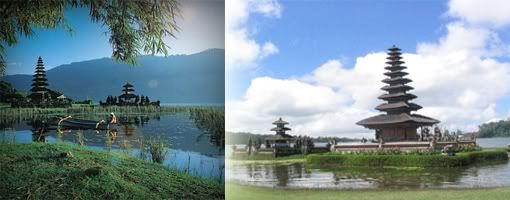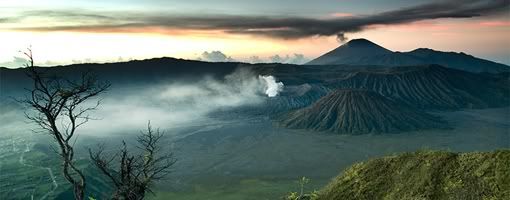
This park is a forest preservation area that extends about 25.000 ha on the north coast of East Java. The location is in Sumberwaru village, Banyuwangi district, Situbondo (on the east border of Java Island). You can enjoy the panorama of savannah and mount Baluran (inactive volcano) in the center of area that becomes habitat of many exotic animals such as wild pigs, deer, peacocks, wild chicken, some species of monkeys and also bulls as the protected animals in the area.
You can enjoy the amazing scenery of the forest and do the safari activities in the wild life and feel the magic of the forest. This park is so unique because 15 km from the main entrance, you can find a beautiful white beach called Bama Beach, here in the habiat of coral reef, fish and mangrove.
You also can observe hundreds species of birds such as hornbills, peacocks and bulbuls. If you like to observe the tropical forest vegetation, the park is a heaven for many species of trees, plants and flowers such as pecan nut trees, Maja, Gadung, Java tamarind trees and mount Widara.
There are several activities that you can do in this park such as: - Safari Forest - forest adventure - Diving and snorkeling - Mountain hiking and mount climbing - Hill walking - Beach adventure to watch the fishermen's daily activities and seed seekers - Canoeing, rowing or boating until you the Fresh Water Gulf, Sejile Gulf and Bilik Beach.
*
Conducting some scientific researching (with prior permission).
Facillities
*
If you prefer to safari to Baluran National Park, there are some cottage designed in Madurese style and operated by Environmental Education Center. There is also a main lodge that will serve you European and Indonesia cuisine.
*
Villas and lodges, you can rent them with your group members (about 20 persons capacity) and the also provide a praying room and a canteen.
*
There are two guesthouses by the beach, but you should have prior reservation.
*
Baluran Information Centre and a small museum that has several preserved animals by the main entrance operated by The Forestry Conservation Region Office.
*
The visitor can do many activities, such as; Diving, Swimming, boating, snorkeling
*
Playground
*
A beautiful camping area that is located in Sumberwaru village (outside of the forest preservation area)
*
Watching Towers that are usually used by rangers to watch or to observe the animals' behaviors and the region surrounding (you can bring a pair of binoculars or telescope to have a better look at the beautiful panorama)
Try to consider the wide ranges of this area, you will be better visit Baluran by your car or rent a car from Denpasar or Surabaya. You can also rent a car at Pasir Putih tourist resort or Situbondo. There is also motorbike public transportation called “ojek” in the main entrance that will take you to Bama Beach (with Negotiated cost)
The Route
o If you take a car, it takes 5 hours from Surabaya and 4 hours from Denpasar, Bali.
o For tourists who stay in Pasir Putih, it takes 1.5 hours and only 1 hours from Situbondo.
Gua Jepang (Japan Cave)
In Baluran National Park, you can see a historical place called “Gua Jepang” (Japan Cave). Gua Jepang is one of historical witness that in this place (Baluran National Park) was happened battle between Indonesia army against Japanese army. Because unequal power, there are a lot of Indonesia army who died in that battle, so this place also called Batangan. Gua Jepang has wide about 12 km that contains in 2 chambers. The north chamber was used to save the weapon, while the south chamber was used as a fissure to see an enemy.
Bekol Savannah
Beside Gua Jepang, in the Baluran National Park, you also can see Bekol savannah. It's about 12 km from the entrance Baluran National park. You will see a flock of deer, bulls, etc, in the morning and in the afternoon (when the sun goes down) to do their activity. You also can see their activity and behavior of those animals from the height.
Bama Beach
Bama beach is located in the east of Baluran National Park. You can see the original beach and the fantastic panorama in here. Beside that you can see the mangrove forest, Bama source and Mantingan source. One of special moment here is that you can see monkey with the long tail (Macaca fascicularis) that fishing crabs with their long tail. If you like go on food, you can pass the truck and you can see the beautiful panorama of Bama Beach on the height. Just with 15,000 Rupiahs per person you can spend the night in Bama Beach to enjoy the beautiful panorama at night here.




